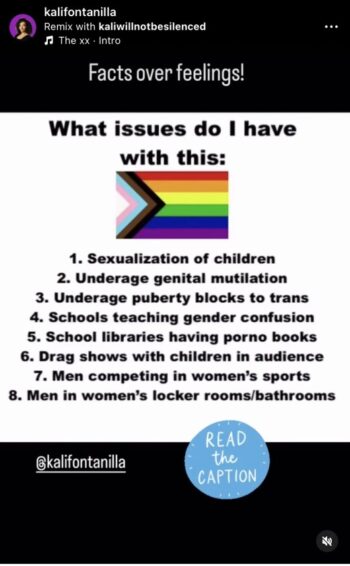Janine Jackson interviewed author and educator Tim Wise about ‘DEI hires’ for the August 2, 2024, episode of CounterSpin. This is a lightly edited transcript.
 Janine Jackson: While Republicans are clearly scrambling to find profitable lines of attack in a new presidential race, they’re deploying one line that draws on a lot of history: labeling presumptive Democratic nominee Kamala Harris a “DEI hire,” with reference to programs designed to promote diversity, equity and inclusion. The notion, if anyone needed it spelled out, is that any Black or brown person or woman in a job is only there because employers were forced to hire them.
Janine Jackson: While Republicans are clearly scrambling to find profitable lines of attack in a new presidential race, they’re deploying one line that draws on a lot of history: labeling presumptive Democratic nominee Kamala Harris a “DEI hire,” with reference to programs designed to promote diversity, equity and inclusion. The notion, if anyone needed it spelled out, is that any Black or brown person or woman in a job is only there because employers were forced to hire them.
To many, this sort of thing is transparent misogyny and racism, and then that special combination of the two. But being obvious doesn’t mean it isn’t impactful. And it doesn’t come out of nowhere. It’s built on decades of undermining any intentional efforts to dismantle or even acknowledge the living history of structurally embedded white supremacy in this country.
Tim Wise is an anti-racism educator, author and critical race theorist. He joins us now by phone from Nashville. Welcome to CounterSpin, Tim Wise.
Tim Wise: Thank you for having me.
JJ: One official definition of DEI is “organizational frameworks which seek to promote the fair treatment and full participation of all people, particularly groups who have been historically underrepresented or subject to discrimination.” We might add that could be historically and currently, but that’s the idea.
Now, it used to be most everyone would say, “Sure, that’s a good idea,” but then maybe just not do it. Now, we seem to have slipped backward to where the right feels they can boldly say, “Oh, we don’t even support that idea.” It’s strange, isn’t it, to miss the good old days when people didn’t say what they thought?

Tim Wise: “When you’re used to hegemony, pluralism begins to feel like oppression.”
TW: Right—we’ve sort of gone from the days of the dog whistle to the air horn or bullhorn on these things. I remember, 30-plus years ago, when I started out doing this work in the campaigns against David Duke down in Louisiana. Duke felt the need to sort of hide his racism, to downplay his overt white supremacy.
And it seems like the gloves are off now. And so DEI has become essentially the new n-word for certain folks on social media. They will apply it to any person of color, regardless of that person’s qualifications, regardless of that person’s accomplishments. And they’ll apply it to public officials who, after all, pass the only test one needs to determine qualifications, which is, they got elected, right?
So if the mayor of Baltimore happens to be a Black man, and a barge hits a bridge and the bridge falls down, they call him the DEI mayor. What does that even mean? I mean, you get elected by getting votes, just like white mayors. And if the mayor had been white, I don’t think there would’ve been some special white man superpower that would’ve kept the bridge up.
But what that is is a way of reminding people, or telling people, these folks are less qualified, and they’re taking your stuff.
And I think the reason that they’ve ramped that up, and the gloves have come off, is that unlike 30-some odd years ago, 20 years ago, we suddenly have white folks confronted with a couple of realities. One is that the culture and the demographics of the country are changing, in a way that renders us less hegemonic than we once were. And when you’re used to hegemony, pluralism begins to feel like oppression. You feel like the wheels are coming off the bus. And so there’s this perfect storm of white anxiety that we are in the midst of, and we’re going to have to figure out how to respond to that.
JJ: And we’ll come back to that. Just doubling on what you’ve just said, folks may remember this 1990 ad for North Carolina Sen. Jesse Helms that showed white hands crumbling a job- rejection letter with the voiceover, “You needed that job and you were the best qualified, but they had to give it to a minority because of a racial quota. Is that really fair?”

“White Hands” ad for Jesse Helms (1990)
It’s powerful, in part, because of what it glides over. How does our dude know he was the best qualified? And then the implication that decades of rejecting minorities because they weren’t white represents the state of fairness that we’re trying to get back to. And, I was just going to say, even though these current campaigns are more overt, they’re still drawing a lot of power from what they don’t say. And why does that work? Who does that work on?
TW: I think it works because, first off, we have a long history of believing, No. 1, of course, that folks of color are less qualified, and whites are more qualified. That’s always been a problem in our country.
But I think there’s an even more fundamental thing at work, and that is, if you think about the most dominant ideological underpinning of America, what is it? The core of our belief system is this belief in meritocracy, rugged individualism, the idea that wherever you end up is all about you. So if you work hard, you can make it, anyone can.
And that’s, in theory, a race-neutral ideology, it’s also the secular gospel. If America were a Bible, it would be Genesis 1:1.
The problem is, once you imbibe that, once you internalize that belief, and you look around, and you see a society of profound racial inequality, of gender inequality, of class inequality, what is the logical thing for a person to do? And by a person, I don’t even mean an overt bigot. I mean an everyday average person who thinks about that, goes, “Gosh, if where you end up is all about your own effort and anyone can make it, then I guess these people on the bottom, maybe they are lesser, right? And the people on the top really are better.”
And so racism and sexism and classism can all be reinforced in people who are not actually particularly hateful, prejudiced or bigoted, but simply put two and two together: the idea of rugged individualism, and the objective reality of social stratification or inequality. So we really have to address that, because that suggests that a core element of American political thought is going to reinforce this kind of thinking. And once it does that, it can reinforce the very systems that promote that thinking.

X (3/15/21)
JJ: Republicans may have faith that they can just say “DEI” and their work is done, because of the success of other recent efforts. I will never get over how Christopher Rufo just called his shot. He just said:
The goal is to have the public read something crazy in the newspaper and immediately think “critical race theory.” We have decodified the term and will recodify it to annex the entire range of cultural constructions that are unpopular with Americans.
And news media, who were in a place to say, “Well, no, you can’t just take a term and say it doesn’t mean what it claims to, it means whatever you say it does”—they didn’t do that. They simply folded this intentional misrepresentation into the public dialogue. I feel like they got played like a fiddle, and for reasons. But it didn’t just allow, but promoted, the notion that these attacks were some organic bottom-up thing, rather than an orchestrated campaign. What do you see as the current or potential role of the press in this?
TW: I think the media have done a miserable job, as you suggest, in responding to the blatantly, transparently dishonest narrative that folks like Rufo are spinning, when he says, as he has on his Twitter thread—he’s amazingly transparent about this—that we’re basically going to pull the wool over everyone’s eyes. We’re just going to name things what we want to name them. We’re going to tell people, this is what it is. We don’t even care.
He’s been quoted in a speech saying he doesn’t give a—and I know I can’t say the next word, because we’re on radio—about what CRT actually is. He doesn’t care about it. He, in fact, wants us to debate the specifics of it, while he just uses it as a propaganda cudgel.

Intercept (6/8/23)
And the media, rather than exposing that, have done piece after piece after piece, and I’m talking puff pieces, about Christopher Rufo, where they don’t dig into the funding, for example, the multi-billionaire dollar stuff that’s coming in for him and the organizations he works for.
This is not some grassroots, bottom-up campaign of some simple guy sitting at his computer in his home, taking on the powerful. This is somebody being funded by the powerful. But hardly any of the media have really attempted to pull back the veil on who he is and who is funding him and what their agenda is. And we know what their agenda is, because it’s the same agenda they’ve had for 50 years or more, really more than that, going back 60 years.
These are the ideological descendants of the people who never supported the civil rights movement, who never supported the Voting Rights Act, the Fair Housing Act, the Civil Rights Act. They’re the ideological descendants of the folks who used to write, at the National Review, that Black folks basically weren’t ready for the right to vote. They weren’t civilized enough yet. That was the official position of Bill Buckley’s magazine back in the ’60s. So that’s who these folks are, and if the media really believed in investigative journalism, they would expose that.
JJ: And then the other line that bugged me was, “Well, they aren’t even teaching CRT in elementary school,” as if that was a pushback.
TW: Yeah, there was sort of a capitulation, right? This idea that liberals, rather than standing up and fighting the attacks, said, “Oh no, that’s not us, my goodness.” Because the implication is, “Well, thank God it’s not, I mean, thank goodness we don’t do CRT with children, that would be poisoning their minds.”
But all CRT tries to do, and this is so important for people to understand, is to provide a theoretical grounding so that when you look out and you see racial disparity, you have a framework and a lens for understanding it. And without a systemic lens, frankly, the only explanation left is the one the right prefers, which is, these Black and brown folks are broken. And CRT is saying, “No, it’s not Black and brown folks who are broken.”
It’s not necessarily that white people are bad. CRT doesn’t bash white people. That’s a great myth. CRT doesn’t really say anything about white people as people. It says something about white supremacy as a system, historically and contemporaneously. And if you don’t have that framework, I don’t know how you can make sense of the world around you, except by blaming the people on the bottom for being there.
JJ: Finally, you travel the country, and have for years, talking to people about these issues. What’s the vibe? Where do you find hope right now?
TW: I find hope in the young folks, disproportionately, who led the uprising, obviously, in 2020 in the aftermath of the killing of George Floyd. I find hope in the young people, disproportionately, who have stood up for the rights of Palestinians and the lives of Palestinians in this moment as well.

City Lights (2020)
I find hope in the enthusiasm that we’re seeing right now in the newly refashioned presidential race. I think there’s a lot of energy to realize that there is an opportunity to defeat Trumpism. There is an opportunity to beat back these folks who say they want to make America great again, by which they obviously mean a directional reference to the past.
I think there’s hope in knowing that the vast majority of the people in this country believe in democracy, want democracy, reject things like Project 2025, and want to move the country forward, rather than moving it backward where those folks want to go.
JJ: All right, then. We’ve been speaking with Tim Wise. The most recent book is Dispatches From the Race War, from City Lights. Tim Wise, thank you so much for joining us this week on CounterSpin.
TW: Oh, you bet. Thank you.
This post was originally published on FAIR.



















































